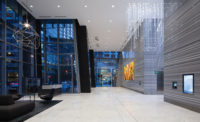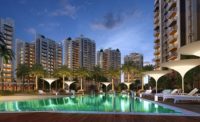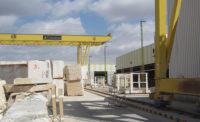NEW YORK, NY-- Cosentino Group, the global leader in the development, production and distribution of innovative surfaces for architecture and design, continues to strengthen its economic and financial position as well as its commitment to sustainable growth, innovation, new technologies and efficient management.
As the 2017 fiscal year closes, Cosentino celebrates a record high with over $1 billion in revenue, a 10% year over year increase in sales compared to 2016, and a 33% increase in profitability at Net Profit level. Along with the impressive economic growth, Cosentino has made investments totaling nearly $246 million, most notably the construction and opening of a second Dekton® manufacturing plant and a smart logistic hub in Almeria, Spain and two new showroom openings, resulting in the creation of 340 direct jobs.
The company closed the fiscal year with a combined revenue of $1 billion, representing an increase of more than 8% from 2016, a figure negatively impacted by the decrease of sales income against the Euro. In comparable terms (using a comparable exchange rate), this figure was 10%, highlighting strong growth in certain markets, including Europe (+20%) and Spain/Portugal (+12%).
In terms of operating results, the company’s earnings before interest tax depreciation and amortization (EBITDA) last fiscal year totalled $157 million, an increase of 10%. Changes in the exchange rate had a strong negative impact on this figure, as well; relatively speaking, this effect was even more pronounced here than for the sales figures above mentioned. With comparable figures, the relative growth on 2016 was 19%. This increase in profitability was caused by the absorption of fixed costs, which led to an increase in combined revenue (+10%).
The figure with the most distinct improvement over the last fiscal year was net profit, totalling $70 million, or a 33% increase on 2016. This was due to very strong financial results, mainly because of the foreign exchange rate hedging policy which mitigated the negative effect previously mentioned in the EBITDA evolution.
The company has already invested around $246 million, or 52% of its total planned investments, whose total value is $468 million; 70% of this has been in manufacturing capacity growth investments.
In addition, Cosentino focused on automating existing facilities at Cosentino’s corporate headquarters in Spain to increase production speed and flexibility. These changes also helped to improve Cosentino’s sustainability practices.
To increase involvement in international markets, Cosentino opened seven new centers in 2017, scattered across countries such as the U.S., Canada, Israel, Singapore, South Africa, Poland and the UAE. Along with the centers, Cosentino opened two spectacular showrooms located at the hearts of the world’s most important cities – Madrid and Dubai.
Thanks to these new facilities, the company closed 2017 with 140 business units in 32 countries across five continents. For the next three years, the company is following an ambitious growth plan, including opening 30 new full-service warehouses (centers) and showroom business units. This follows up on the company’s new and recent corporate commitment to “inspire people through innovative spaces".
The preceding capital expenditure, in production as well as business units and logistics, have been financed through a combination of own assets and outside financing (which grew 9%, or approximately $24 million, last year). Company debt has undergone positive changes, and the current indebtness ratio (Financial Net Debt to EBITDA) is 1.5 times.
As in previous fiscal years, industrial and commercial growth have been accompanied by strong headcount growth, and the total number of employees at the end of 2017 totalled more than 4,000 people worldwide. Last year, Cosentino created 340 new jobs on top of the 300 jobs created worldwide in 2016 – 640 total over the course of the past two years.



